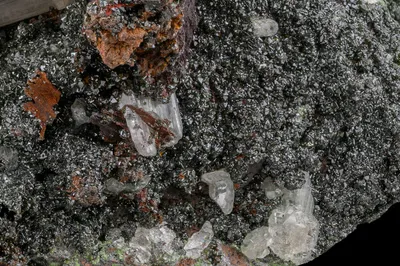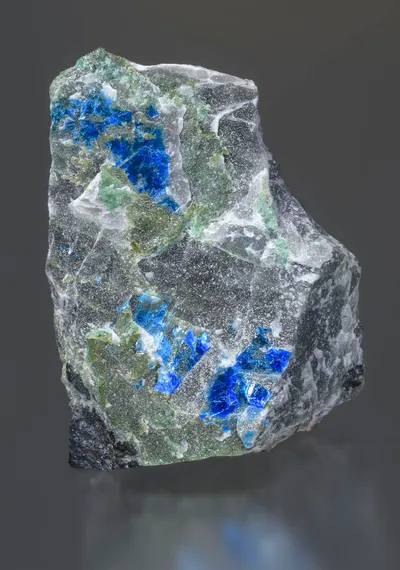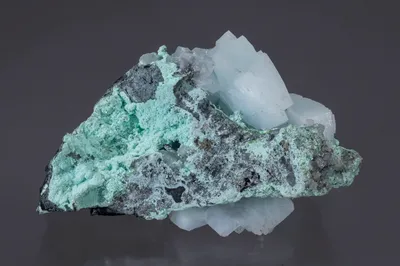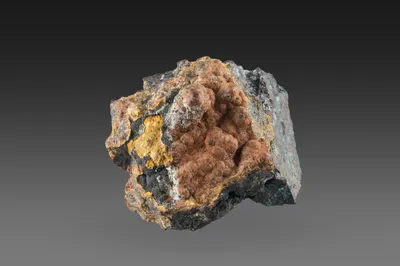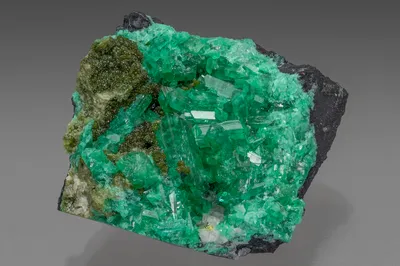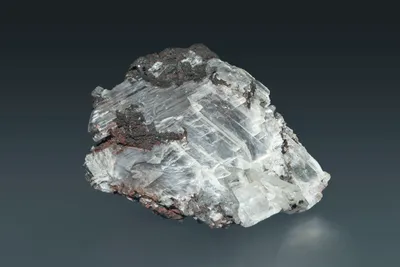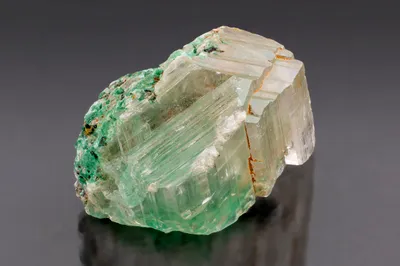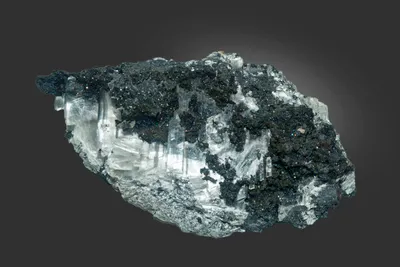Mineral Species
Gypsum
Type Locality
No
Composition
CaSO4 2H2O
Crystal System
Monoclinic
Status at Tsumeb
Confirmed
Abundance
Somewhat rare
Distribution
First, second and third oxidation zones; (country rocks (dolostone stratigraphy)
Paragenesis
Rock-forming (diagenetic); supergene
Entry Number
Species; TSNB159
General Notes
Gypsum, generally as colourless but well-formed crystals to several centimetres, occurs in cavities in partly oxidised ores in both the first and second oxidation zones and as a component of relict evaporite horizons in the dolostone country rock (Hughes 1987).
The occurrence of gypsum at Tsumeb was noted by Klein (1938) who described "beautiful crystals" of the mineral in association with copper carbonate minerals in the upper levels of the mine. The Klein Collection catalogue (unpublished; MGMH Collection, Harvard University) lists eight specimens of gypsum, all of which are attributed to between levels 3 and 8 in the first oxidation zone. Only one of these specimens survives at Harvard (MGMH # 127387; Klein 790). It is a single, composite, but incomplete colourless terminated crystal measuring 50 mm in length and locally coloured green by inclusions of malachite, and with a little iron oxide imparting a patchy orange-brown colouration.
Geier (1973/74) mentioned the rare occurrence of small druses of gypsum in the second oxidation zone.
Pinch and Wilson (1977) noted that gypsum "… forms colorless, transparent crystals, druses and cleavages; good crystals to several cm have been found with carbonate minerals". Lombaard et al. (1986) listed gypsum as a mineral that is widely distributed at Tsumeb, but in small quantities.
Gypsum was a late-forming mineral in the unusual paragenesis discovered in the North-East Stope on 35 Level in early 1980. Keller and Bartelke (1982) proposed the following paragenesis:
R/7: primary sulphides >> chalcocite >> lammerite >> unidentified silicates >> TK-like mineral [thometzekite] >> anhydrite >> leightonite >> chalcanthite >> gypsum
Keller (1984) cautioned that gypsum at Tsumeb can be confused with claudetite, koritnigite or schultenite; Gebhard (1999) added chudobaite and leiteite to the list of minerals potentially mistaken for gypsum. However, all these minerals are very much rarer. Keller (1984) noted that anidiomorphic examples of gypsum, formed as fracture in-fills, were relatively common, while well-formed crystals of interest to collectors were much harder to come by.
Hughes (1987) described the occurrence of gypsum, together with nodular anhydrite, as a component of the evaporite paragenesis in the T7 unit of the Tsumeb Subgroup dolostone stratigraphy.
Medenbach et al. (1988) listed gypsum as a component of the type specimen for fahleite, while Gebhard (1999) noted the occurrence of feinglosite as inclusions in gypsum believed to have been recovered from the third oxidation zone.
Von Bezing et al. (2016) commented that gypsum from Tsumeb is "surprisingly scarce".
Associated Minerals
anglesite; anhydrite; azurite; brochantite; calcite; chalcanthite; chalcocite; conichalcite; copper; dolomite; duftite; fahleite; feinglosite; koritnigite; lavendulan; leightonite; malachite; mimetite; otjisumeite; quartz; schaurteite; spertiniite; sulphur; tennantite-(Zn); thometzekite; tsumcorite; vanackerite; zincolivenite
Pseudomorphs
The following minerals are reported to form pseudomorphs after gypsum: brochantite (rare).




